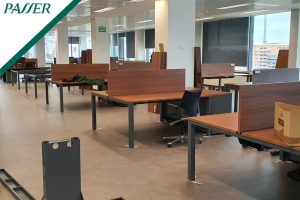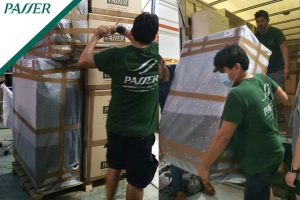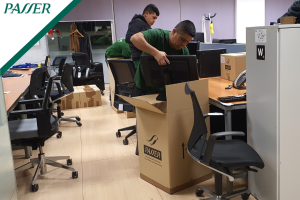How will homes begin to be considered in the post-covid era?
Homes in the post-COVID era It's a concept that has gained momentum as a result of the social, work-related, and personal changes brought about by the pandemic. COVID-19 forced us to rethink the way we live and use our spaces, and this new reality has forever transformed our perception of home. Architecture, interior design, and home planning are evolving toward larger, healthier, and more sustainable environments, with a greater presence of green areas and solutions adapted to current needs.
The experience of lockdown highlighted the importance of having a space that is not only comfortable but also adaptable to different uses and circumstances. Therefore, the homes of the future will be designed with greater versatility, efficiency, and connection to the outdoors.
Homes of tomorrow: more functional and adaptable
During the quarantine, many families were forced to spend more time at home than ever before, highlighting the need to optimize living conditions. The homes of the future will need flexible spaces that can be transformed into offices, gyms, or leisure areas as needed. Habitability decrees are being reviewed to ensure that minimum conditions are met to accommodate these types of changes.
Furthermore, growing health concerns have increased attention to hygiene and ventilation, driving the creation of healthier homes.
Housing characteristics in the post-COVID era
People living in large cities face a hectic pace of life, limited space, and high prices. The pandemic has accelerated the trend of moving to peripheral or rural areas to access larger, more affordable housing. Among the most notable characteristics of homes in the post-COVID era are:
Versatile and functional spaces: The home should be used for work, sports, rest and leisure time without sacrificing comfort.
Greater connection between interior and exteriorTerraces, balconies, gardens and rooftops take center stage, allowing you to breathe fresh air and enjoy natural light.
Redesign of the bathroom area: It is proposed to separate the shower, sink and toilet to improve hygiene and facilitate their use by several people at the same time.
Energy autonomy: Homes equipped with solar energy and sustainable systems to reduce environmental impact and prepare for the future.
These changes aim not only to improve quality of life, but also to ensure that homes are resilient to potential situations similar to those experienced during the pandemic.
A home as a multifunctional refuge
After the COVID-19 pandemic, the home is perceived as a refuge that should allow for cooking, eating, working, exercising, and enjoying leisure time without limitations. The trend is toward homes with more square footage, outdoor areas, and layouts that promote the emotional and physical well-being of their occupants.
Open-plan kitchens, multipurpose rooms, and private or shared outdoor spaces (such as communal rooftops) are becoming key elements in designing homes in the post-COVID era.
Industrialized and sustainable constructions
The construction industry is also adapting to this new era. Compared to traditional methods, faster, more sustainable, and efficient techniques are being adopted. Industrialized construction allows for reduced construction times through standardized designs and controlled production.
The use of sandwich panels It's an example of innovation in this sector. These elements, installed directly onto the structure, facilitate assembly, reduce resource consumption, and minimize waste. This makes it possible to build homes anywhere in less time, without compromising quality or sustainability.
This transformation not only responds to the demands arising from the pandemic, but also aligns with global challenges related to climate change and energy efficiency.
Homes in the post-COVID era: a new way of living
The pandemic taught us that home is not just a place to sleep, but a space that must adapt to all facets of our lives. homes in the post-covid era They are a direct response to that need: more flexible, connected to nature, sustainable and prepared for the challenges of the future.
If you're thinking about moving or renovating your home to adapt it to this new reality, it may be the perfect time to plan your home with a long-term vision. And if you need logistical support, Passer offers moving and storage services to make the process convenient, safe, and organized.








